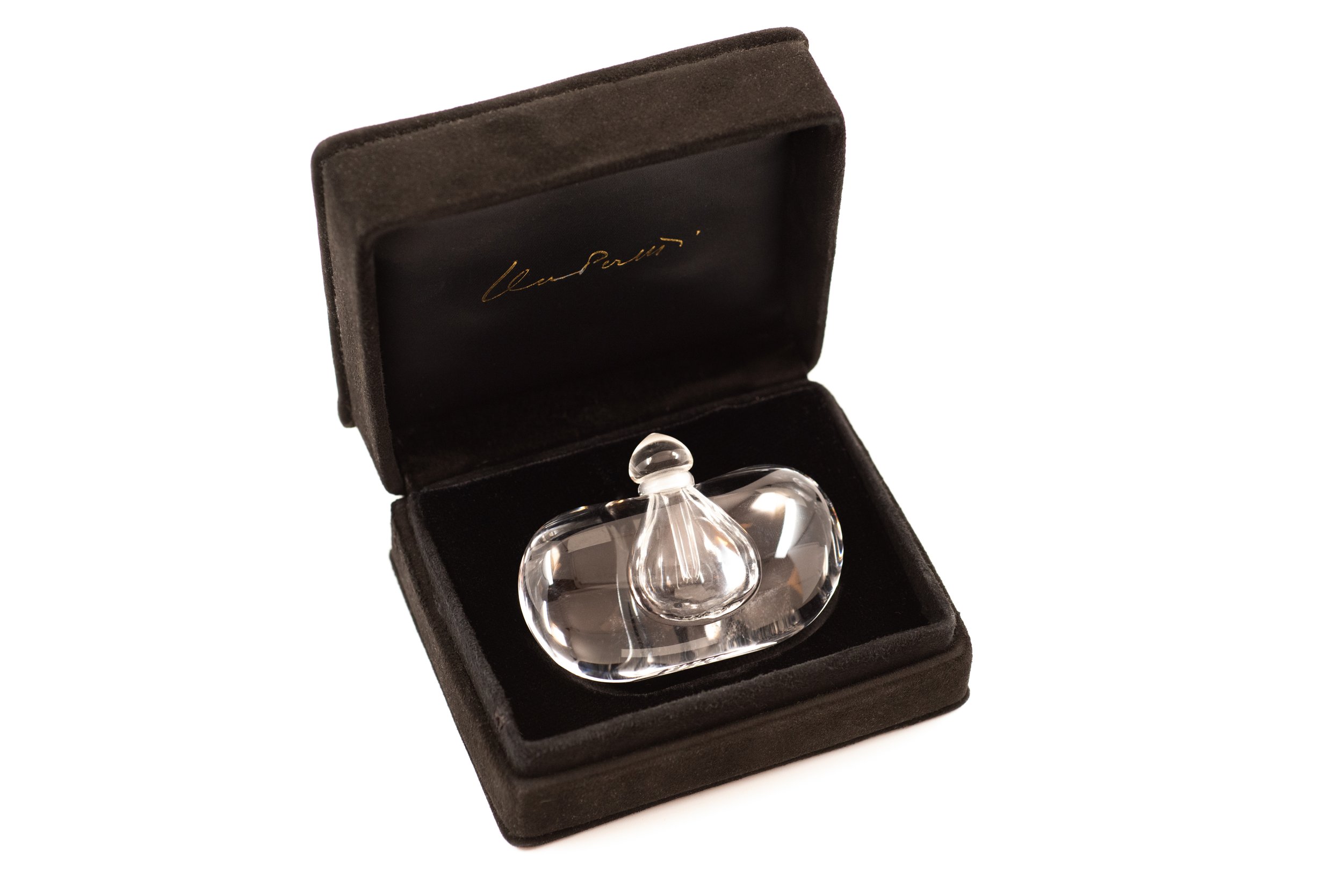ELSA PERETTI (1940-2021)
Elsa Peretti was an Italian jewelry designer heralded as one of the most important figures in jewelry of the past century. She was born on May 1, 1940. Born into privilege in Italy and educated in Rome and Switzerland, Peretti eventually returned to Rome to pursue a degree in interior design. By 1969 she had established herself as a fashion model in New York and Barcelona—a massive blow to her conservative family—and began to design her own jewelry. The American fashion designer Giorgio di Sant’Angelo used a few of her pieces in a fashion show, which were an instant success. Peretti knew that jewelry would be her path forward. During this time, she met the legendary designer Halston, who became her longtime friend and frequent collaborator. Her first jewels—an organic bottle pendant and a heart-shaped belt—were also well received when di Sant’Angelo and Halston both showed them on their runways. “A lot of people liked the bottle,” remembered Elsa. “And I continued to model to pay for the production.”
The arrival of Elsa Peretti at Tiffany & Co. in 1974 signaled a revolution for the firm. “I design for the working girl,” explained Peretti in a 1974 interview with People magazine shortly after her launch party at Tiffany that attracted over two thousand fans. “What I want is not to become a status symbol but to give beauty at a price.” Peretti put Tiffany in touch with what was happening on the street in the 1970s by making affordable designer silver jewelry and stylish diamond necklaces with a starting price point of $89. Silver jewelry with shapely curves has defined a significant portion of Peretti’s work there. “Touch is important: I get lots of my inspiration from tactile things, maybe because I don’t see very well,” Peretti told the New York Post about her style in June of 1971.
Another one of her instant classics was the Bone Cuff, of which she once said: “My love for bones has nothing macabre about it. As a child, I kept on visiting the cemetery of a seventeenth-century Capuchin church with my nanny. All the rooms were decorated with human bones. My mother had to send me back, time and again, with a stolen bone in my little purse. Things that are forbidden remain with you forever.” One of the key elements of that design was the bump for the wrist bone in her Bone Cuff; in an interview in 2013, she said: “It was done with the first craftsman I worked with, Señor Abad. He did the Bottle pendant too. I was so thin at the time, and I was designing it on my left wrist. Then there was a flash between us about the area around the wrist bone. Between the craftsman and me, there is something in the air.” Peretti consistently gave credit by name to the craftsmen who helped her conceive her designs. She once said, “I am not an artist; I’m a craftswoman.”
Peretti got the idea for her “Mesh” collection, which debuted in 1975, when she saw the material during a trip to India. Peretti’s problem was how to make mesh in Manhattan. She contacted the director of the jewelry department at the Fashion Institute of Technology (FIT), Samuel Beizer, for assistance. Together, they found old machines that were originally used to manufacture the pressure metal mesh for evening bags in the early years of the twentieth century. Peretti and Beizer used these apparatuses to make “Mesh” pieces including the bra that debuted on the Halston runway. The construction was such that there were no seams on the many links. It was smooth to the touch. In Peretti’s own words: “Style is to be simple.”
She revived the use of silver for her organic, sensually minimal forms, imbued with talismanic meaning and deep emotion, creating contemporary jewels for the new generation of independent, working women who bought jewelry for themselves. Peretti’s genius is being able, instinctively, to distill an idea or image to its purest essence. Peretti’s success continued to blossom, and she designed china, crystal, and silver objects for the home. In 1999 on her 25th anniversary with Tiffany & Co., to underscore her lasting legacy, the company established the Elsa Peretti Professorship in Jewelry Design at FIT, the first endowed professorship in the school’s history. In 2001, the designer was presented with an honorary Doctor of Fine Arts degree from FIT. In further tribute, the Elsa Peretti jewelry case in Tiffany’s Fifth Avenue flagship store was designated a Tiffany landmark. Other awards Elsa Peretti received include the 1971 Coty Award for jewelry, followed by the Rhode Island School of Design President's Fellow Award in 1981. In 1996, the Council of Fashion Designers of America named her Accessory Designer of the Year. Peretti died on March 21, 2021.





